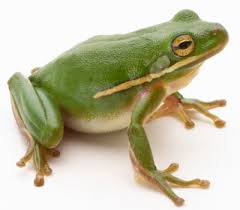Se-tenant: Kassina senegalensis (Chad 2023)
Kassina senegalensis (Chad 2023)
28 June (Chad ) within release Recovery Integrating Biodiversity (2023) goes into circulation Se-tenant Kassina senegalensis face value 8*750 Central African CFA franc
| Se-tenant Kassina senegalensis in catalogues | |
|---|---|
| Colnect codes: | Col: TD 2023.06.28-008KB |
Se-tenant is square format.
Also in the issue Recovery Integrating Biodiversity (2023):
- Se-tenant - Centrochelys sulcata face value 8*750;
- Se-tenant - Chlorocebus tantalus face value 8*750;
- Se-tenant - Chlorophyllum molybdies face value 8*750;
- Se-tenant - Diceros bicornis face value 8*750;
- Se-tenant - Giraffa camelopardalis antiquorum face value 8*750;
- Se-tenant - Hippoptamus amphibius face value 8*750;
- Se-tenant - Kassina senegalensis face value 8*750;
- Se-tenant - Lexodonta africana face value 8*750;
- Se-tenant - Panthera leo face value 8*750;
- Mini Sheet - Recovery Integrating Biodiversity face value 11*1500;
- Mini Sheet - Recovery Integrating Biodiversity face value 4*2000;
- Souvenir Sheet - Recovery Integrating Biodiversity face value 5,000;
- Se-tenant - Vulpes cerda face value 8*750;
Se-tenant Kassina senegalensis it reflects the thematic directions:
A frog is any member of a diverse and largely carnivorous group of short-bodied, tailless amphibians composing the order Anura[(coming from the Ancient Greek ἀνούρα, literally 'without tail'). The oldest fossil "proto-frog" Triadobatrachus is known from the Early Triassic of Madagascar (250 million years ago), but molecular clock dating suggests their split from other amphibians may extend further back to the Permian, 265 million years ago. Frogs are widely distributed, ranging from the tropics to subarctic regions, but the greatest concentration of species diversity is in tropical rainforest. Frogs account for around 88% of extant amphibian species. They are also one of the five most diverse vertebrate orders. Warty frog species tend to be called toads, but the distinction between frogs and toads is informal, not from taxonomy or evolutionary history.
Reptiles are tetrapod (four-limbed vertebrate) animals in the class Reptilia, comprising today's turtles, crocodilians, snakes, amphisbaenians, lizards, tuatara, and their extinct relatives. The study of these traditional reptile orders, historically combined with that of modern amphibians, is called herpetology. Because some reptiles are more closely related to birds than they are to other reptiles (e.g., crocodiles are more closely related to birds than they are to lizards), the traditional groups of "reptiles" listed above do not together constitute a monophyletic grouping (or clade). For this reason, many modern scientists prefer to consider the birds part of Reptilia as well, thereby making Reptilia a monophyletic class.


